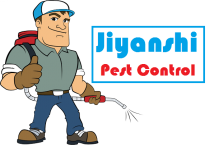Services

Bed Bugs

Bed bugs are parasitic insects that feed on the blood of humans and animals. They are small, oval-shaped, and typically brown or reddish-brown in color. Bed bugs can be a major nuisance as they infest homes, hotels, and other places where people reside.
When it comes to pest control for bed bugs, it’s important to take immediate action to prevent their spread and eliminate the infestation. Here are some steps typically involved in bed bug pest control:
Inspection: A thorough inspection is conducted to identify the extent of the infestation and locate the areas where bed bugs are hiding. Common hiding spots include mattresses, box springs, bed frames, headboards, furniture, cracks, and crevices.
Treatment options: There are several treatment options available for bed bug control, and the choice depends on the severity of the infestation and the preferences of the homeowner. Common methods include like: Insecticide treatment, Heat treatment, Steam Treatment, Vaccuming, Encasement.
Termite

Termites are destructive pests that feed on wood and can cause significant damage to buildings and structures. Termite control is crucial to protect properties from infestations and prevent structural damage. Here are some common steps involved in termite pest control:
Inspection: A thorough inspection is conducted to determine the presence and extent of termite infestation. Professional pest control companies often employ trained technicians who know where to look for signs of termite activity, such as mud tubes, damaged wood, and discarded wings.

Identification: It is important to identify the type of termites present, as different species may require different treatment approaches. The most common types of termites include subterranean termites, dry wood termites, and damp wood termites.
Treatment options: Depending on the type and severity of the infestation, various treatment methods may be used: Liquid termiticides, Baiting Systems, Wood treatments, Fumigation.

Cockroach

Cockroaches are common household pests that can be a nuisance and a potential health hazard. They are known for their ability to adapt and survive in various environments. Effective pest control measures are crucial to eliminate cockroaches and prevent infestations. Here are some steps typically involved in cockroach pest control:
Inspection: A thorough inspection is conducted to identify the areas of cockroach activity and locate their hiding spots. Common areas where cockroaches hide include kitchens, bathrooms, basements, cracks, crevices, and behind appliances.
Sanitation: Good sanitation practices are essential to minimize food and water sources that attract cockroaches. This involves keeping the environment clean, removing food and water spills promptly, and properly storing food in sealed containers.
Exclusion: Sealing entry points and cracks where cockroaches can enter the premises is an important step in preventing infestations. This can include caulking gaps in walls, floors, and windows, repairing leaky pipes, and installing door sweeps.
Treatment options: There are several treatment methods available for cockroach control: Insecticide sprays, Baiting, Dusts & Powders,Growth Regulators, Traps.
Rat

Rats are common pests that can cause significant damage to property and transmit diseases. Effective pest control measures are necessary to eliminate rats and prevent infestations. Here are some steps typically involved in rat pest control:
Inspection: A thorough inspection is conducted to identify signs of rat activity and locate their nesting areas, burrows, and entry points. Common signs include droppings, gnaw marks, tracks, and grease marks along walls.

Exclusion: Sealing entry points and potential access areas is crucial to prevent rats from entering the premises. This involves inspecting and repairing gaps in walls, roofs, doors, windows, and utility pipes. Door sweeps and mesh screens can be installed to block entry points.
Sanitation: Good sanitation practices are important to remove potential food and water sources that attract rats. This includes storing food in sealed containers, properly disposing of garbage, cleaning up spills, and eliminating standing water.

Lizard

Lizards are generally considered beneficial creatures as they help control populations of insects and other pests. However, if you have a specific issue with lizards in your home or certain areas where their presence is undesirable, there are some steps you can take to address the situation. It’s important to note that most lizard species are protected and it is recommended to use humane methods to deal with them. Here are some suggestions for lizard pest control:
Exclusion: The first step is to seal off any entry points through which lizards are entering your home or targeted areas. Inspect doors, windows, and cracks in walls for gaps or openings and seal them using weatherstripping, caulk, or mesh screens.
Habitat modification: Lizards are attracted to environments that provide them with food and shelter. To make your property less appealing to lizards, consider reducing insect populations, which are their main food source. Use insect screens on windows and doors, fix any gaps or cracks that insects can use to enter your home, and maintain proper sanitation to reduce potential food sources.



